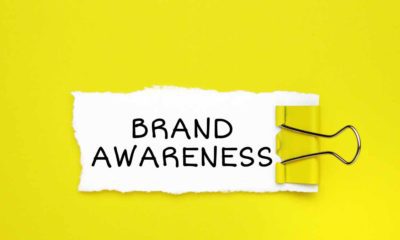Featured
CRO Marketing 101: A Beginner’s Guide to Improving Conversion Rates
As the digital landscape continues to evolve, conversion rate optimization (CRO) marketing has become an essential element of any successful digital marketing strategy. At its core, CRO marketing is a data-driven process of improving the user experience on a website or landing page. This is done in an effort to increase the percentage of visitors who take a desired action. For example, such as making a purchase or filling out a lead form.
In this article, we will delve deeper into what CRO marketing is. Also, how it works, and why it is crucial for businesses looking to improve their online performance. We will also provide five tips for creating a winning CRO marketing strategy that can help businesses achieve better results from their digital marketing efforts.
What Is CRO Marketing?
CRO marketing is a data-driven process of improving the user experience on a website or landing page in order to increase the percentage of visitors who take a desired action, such as buying something on your website or newsletter signup.
It involves a range of techniques. For example, A/B testing, user surveys, and heat mapping. These are used to identify areas of a website that are causing visitors to drop off. Or abandon the site without taking action. By making targeted changes to these areas, businesses can optimize the user experience and increase the chances of converting visitors into customers.
CRO marketing can encompass a wide range of elements, such as website design, content, navigation, and user flow. By understanding how users interact with a website and what factors influence their decision-making, businesses can make data-driven decisions to improve the user experience and drive better results.
[Read More] How To Create a Cohesive Marketing and Sales Strategy
How Does CRO Marketing Work?
CRO marketing involves a systematic process of identifying areas of a website or landing page that is causing visitors to drop off or abandon the site without taking action. This involves using a variety of tools and techniques to gather data on user behavior and analyze the user experience. Some of the key elements of CRO marketing include:
- Data analysis: CRO marketing begins with an analysis of website data, such as traffic sources, bounce rates, and conversion rates. This data can provide insights into what elements of the website may be causing visitors to drop off or abandon the site without taking action.
- User research: CRO marketing also involves gathering qualitative data through user surveys and user testing. This can provide insights into how users interact with a website and what factors influence their decision-making.
- A/B testing: A/B testing involves creating two different versions of a webpage or element and testing them against each other to see which version performs better. This can help businesses make data-driven decisions about which elements of their website to optimize for better conversion rates.
- Heat mapping: Heat mapping involves analyzing user behavior on a website by tracking mouse movements, clicks, and scrolling behavior. This can provide insights into what areas of a website are attracting the most attention and which areas are being ignored.
- User flow analysis: User flow analysis involves analyzing how users move through a website, from the landing page to the checkout page. This can help businesses identify areas where users are dropping off and make targeted improvements to the user experience.
By using these tools and techniques, businesses can optimize the user experience and increase the chances of converting visitors into customers.
Why Is CRO Marketing Important?
CRO marketing is important for several reasons. Firstly, it can help businesses improve their website performance and increase their conversion rates. By optimizing the user experience and making targeted improvements to the website, businesses can increase the percentage of visitors who take a desired action.
Secondly, CRO marketing can provide valuable insights into user behavior and preferences. By analyzing data on user behavior and conducting user research, businesses can gain insights into what factors influence user decision-making and what elements of their website are most effective at converting visitors into customers.
Finally, CRO marketing can help businesses stay competitive in a crowded online marketplace. By continuously optimizing the user experience to improve website performance, businesses can stay ahead of the curve and achieve better results than their competitors.
[Read More] What Is Marketing Attribution? Your Must-Read Guide
5 Tips For Creating a Winning CRO Marketing Strategy:
Here are five tips for creating a winning CRO marketing strategy:
- Identify your goals: Before beginning your CRO marketing efforts, it’s important to identify your goals and what actions you want visitors to take on your website. This can help you focus your efforts and make targeted improvements to the user experience.
- Analyze your data: Use website analytics tools to analyze data on user behavior, traffic sources, and conversion rates. This can help you identify areas of your website that are causing visitors to drop off or abandon the site without taking action.
- Conduct user research: Use surveys and user testing to gather qualitative data on user behavior and preferences. This can provide insights into what factors influence user decision-making and what elements of your website are most effective at converting visitors into customers.
- Optimize your website: Use A/B testing, heat mapping, and user flow analysis to make targeted improvements to your website. This can involve optimizing page layout, navigation, content, and calls to action to improve the user experience and increase conversion rates.
- Continuously monitor and refine: CRO marketing is an ongoing process that requires continuous monitoring and refinement. Use data to track the effectiveness of your website changes and make adjustments as needed to achieve better results over time.
Bottom Line
As you can see, CRO marketing is a powerful tool for any business, no matter what the size. By utilizing all of the marketing aspects together at the same time, you have the potential to vastly increase your customer base, your website traffic, and ultimately your revenues.
Of course, success with Conversion Rate Optimization isn’t guaranteed. Though, if implemented properly, with relevant testing and improvements, there can be a great reward from investing in and implementing CRO-based strategies.
FAQs about CRO Marketing
What is the difference between CRO marketing and SEO?
CRO marketing focuses on optimizing the user experience on a website to increase conversion rates. While SEO focuses on improving a website’s visibility on search engines.
What is the difference between CRO marketing and SEM?
CRO marketing focuses on optimizing the user experience on a website to increase conversion rates. On the other hand, SEM focuses on using paid advertising to drive traffic to a website.
How long does it take to see results from CRO marketing?
The timeline for seeing results from CRO marketing can vary depending on the complexity of the website. As well as the level of optimization required. Generally, businesses can expect to see improvements in conversion rates within a few months of implementing CRO strategies.
How do I measure the success of my CRO marketing efforts?
Success in CRO marketing is typically measured by improvements in conversion rates. As well as other key performance indicators (KPIs), such as click-through rates and time on site.
Can CRO marketing be applied to mobile websites?
Yes, CRO marketing can be applied to both desktop and mobile websites. However, it’s important to consider the unique user experience and design elements of mobile websites when optimizing for conversion rates.
Brett Heimann is a marketing & advertising professional with 10 years of experience. He's the founder of MarketingAgency.com and contributes to other publications such as; Entrepreneur, Thrive Global, and StockMarket.com. His passion for digital marketing began after graduating with a B.S.B.A in business administration and finance in 2013. After completing college, he went on to become an entrepreneur in the marketing and finance space. Brett loves the ability to deliver to his readers engaging and educational content that can be easily consumed by the reader. He enjoys writing about a wide variety of marketing topics such as; Search Engine Optimization (SEO), Paid Advertising (PPC), E-Commerce, and Lead Generation For SMBs to name a few. Brett, a South Florida native, enjoys spending time with his wife and two sons outdoors and is a big basketball and MMA fan.











